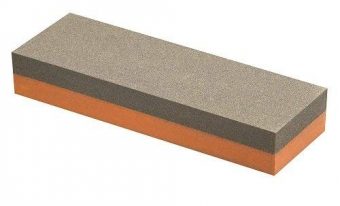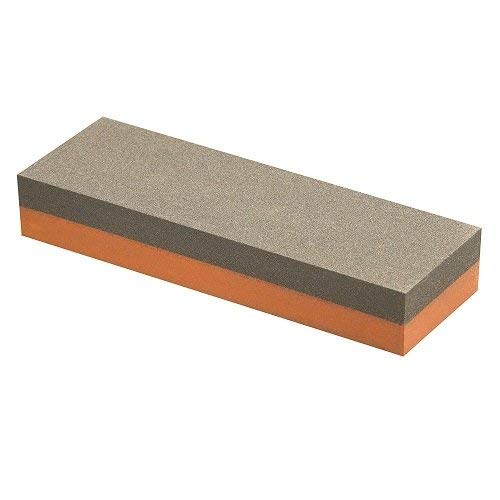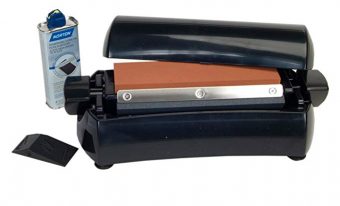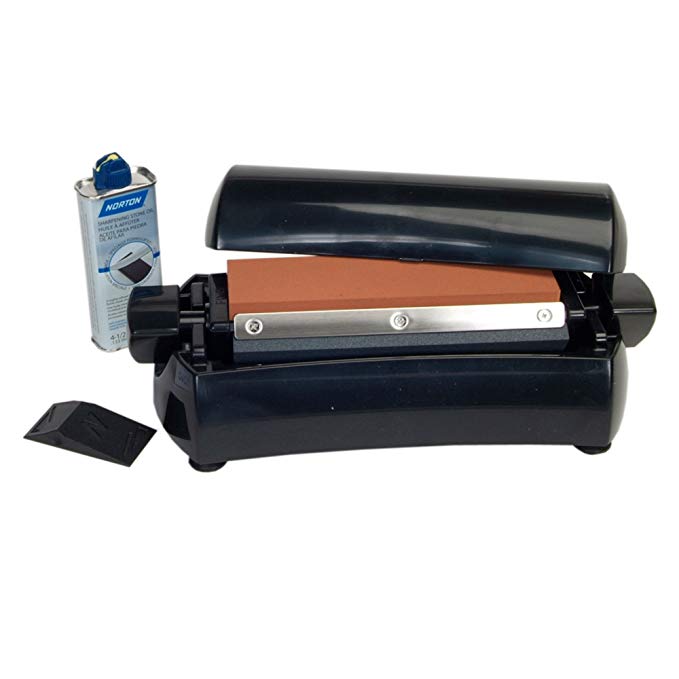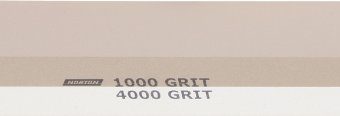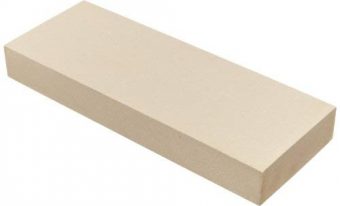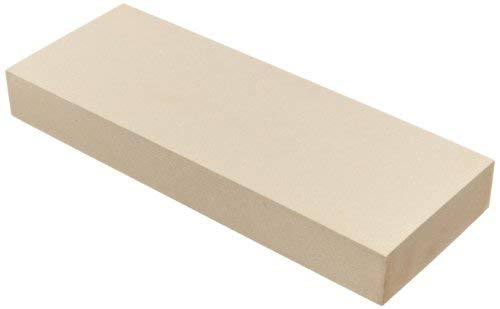Norton 614636855653 IB8 1-by-2-by-8-Inch Fine/Coarse India Combination Oilstone, Red Review
Product Description
The Norton 614636855653 IB8 India 100/320-grit combination oilstone is made of aluminum oxide with 100 grit on one face for repairing steel cutting edges and 320 grit on the opposite face for sharpening and maintaining them; it produces durable, smooth-cutting edges, and is preferred for close tolerances. This oilstone is used to restore cutting edges on straight-edged tools, such as chisels, knives, plane blades, and precision instruments. The stone is prefilled with oil to save time and eliminate the need to presoak it prior to use. The oil prevents metal from bonding with the abrasive surface by flushing away dislodged abrasive and metal chips.
This aluminum oxide stone has a tough fracture- and wear-resistant grit that is more durable than silicon carbide and capable of sharpening to very close tolerances. It is created by grading aluminum oxide to a consistent particle size and blending it with bonding agents. It is then molded and surface-finished. This 1 x 8 x 2 inch (H x W x D) stone, suitable for bench use, is harder and more durable than a waterstone. (H is height, the vertical distance from lowest to highest point; W is width, the horizontal distance from left to right; D is depth, the horizontal distance from front to back.) It conforms to the American National Standards Institute (ANSI) abrasive grit standards.
Sharpening stones, or whetstones, are abrasive surfaces used to sharpen and hone the edges of steel cutting implements, such as chisels, knives, scissors, hand scrapers, and plane blades. Sharpening is the process of creating or re-establishing a cutting edge by grinding away portions of the metal to adjust the angle of the edge and reform the shape. Honing removes small imperfections. Stones can be flat, for working flat edges, or shaped, for edges that are more complex. Sharpening stones are made of natural or synthetic materials that range from softer to harder, and are categorized by the size of their abrasive particles, known as grit. A stone with a coarser grit is used when more metal needs to be removed (e.g., when sharpening a nicked or very dull blade); the stone with the finest grit produces the sharpest edge. Where numbers are assigned to specify grit, they range from coarser grit (low) to finer grit (high). Some sharpening stones are designed for use with a lubricating liquid, some can be used dry, and others can be used either wet or dry. When used with lubricating liquid, a sharpening stone can be called a waterstone or an oilstone, based on the lubricant required.
Norton Abrasives manufactures sanding, grinding, and polishing abrasives, and has been located in the United States since 1885. Norton, now a brand of Saint-Gobain, meets ISO 9000 and 14001 certification for quality and environmental management standards.
From the Manufacturer
IB8 Combination India bench oilstones have 2-Grit on opposite sides of each stone, reducing the cost of owning a variety of grit sizes for sharpening. Coarse India at on one side is a medium cutting rate man-made sharpening stone for fine edges. Use to sharpen dull edges quickly. Fine India at is used to provide a fine edge. Use to restore slightly dulled cutting edges and enhance the finish left by medium and coarse crystolonat or and India at stones. Norton India oilstones are manufactured using a proprietary process that impregnates them with a petroleum based product that allows the lubrication used during the sharpening process to stay on the stone’s surface. As a result, the metal from the object being sharpened and small pieces of abrasive that break off the stone become suspended in the lubricant. This prevents these materials from imbedding into the sharpening stone’s surface, keeping it free cutting and making it easy to keep its surface clean.
